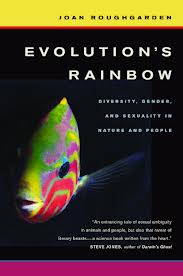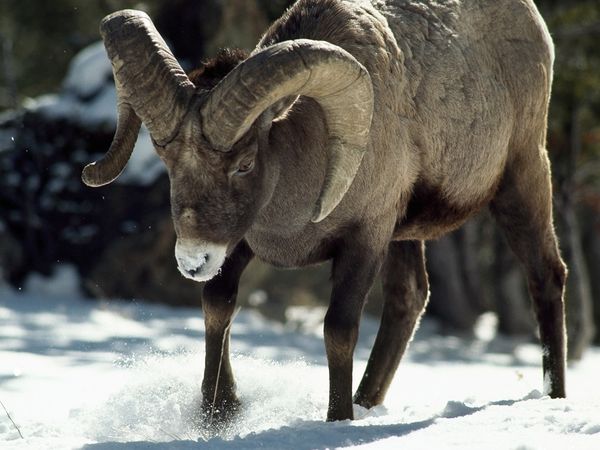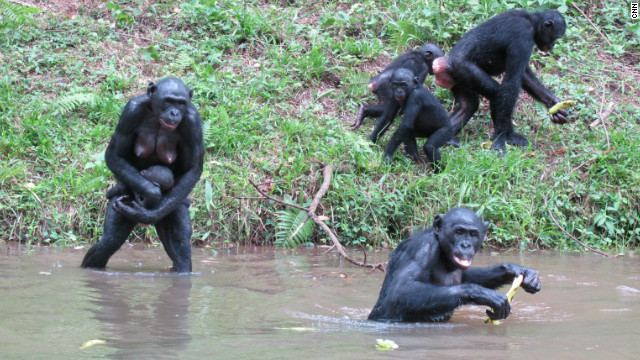
A few days ago a small cardboard box arrived, leaning precariously out of my mailbox. Now, this is somewhat of a common occurrence, because I have no sense of self-control when it comes to buying books. But this was no ordinary book — it was Joan Roughgarden’s Evolution’s Rainbow, which several of you commenters have mentioned before. Well, I finally got it, and I am so glad you all told me about it!
Roughgarden is a professor of biology at Stanford University, and author of several other books on the intersection of evolutionary biology and social mores. A transgender woman, she discusses how she kept her job at Stanford during her transition but had to relinquish many administrative duties; she used her newfound free time to research the diversity of gender and sex across species and cultures. She wrote Evolution’s Rainbow both as a catalogue of diversity across the natural world in sex, gender, and sexuality, and also as an “indictment” of all academic fields for suppressing or ignoring the diversity that we see.

The book features a sunfish on the front, a species which has four genders and is native around Roughgarden’s home town (via theguardian.com)
This is an incredible book. It’s a brick, yes, clocking in at 407 word-filled pages, but its text is accessible, well-written, and insightful. Every page or two elicited a ‘holy cow that’s so awesome!’ from me, and all of you — biologists and non-biologists and poets alike — you all should read it. In the meantime, while you wait for your own copy to arrive, I’ll try to summarize what I took away from the book — with the important caveat that I am no evolutionary biologist, or even a life scientist in general.
Her premise, as I see it, is that there are hundreds (or more) of species that don’t exhibit behaviors consistent with Darwinian sexual selection theory, suggesting that it is not the universal truth we take it to be. Further, our current insistence on sexual selection theory leads to incorrect conclusions as well as dangerous societal implications, which I’ll discuss more in a bit.
A little bit of background: Sexual selection theory states that the basic building blocks or templates for a species are male and female, and that each sex has built-in traits —the male is the assertive, passionate one, and the female is shyer and coyer. Males compete for the attention of females, and the female generally chooses the most successful-looking males to mate with, thus ensuring strong and successful offspring. Roughgarden writes:
“This theory [sexual selection theory] that social life boils down to a selection for showy traits is both inaccurate in its universalist claims and inadequate to address the diversity of bodies, gender expression, and sexuality that actually occurs in nature. Furthermore, the theory has been corrupted by evolutionary psychologists and others to naturalize injustice and deny freedom of expression.”

The author, Joan Roughgarden (via ai.eecs.umich.edu)
In a section entitled “Sexual Selection Corrupted,” Roughgarden argues that the problem with this general theory of reproduction, apart from the possibility that it is over-generalized and incorrect, is that it leads both to a disparaging of any member of a species that is not the “alpha-male” type, and that it naturalizes male aggression and domination of females. In modern times, a corrupted take on sexual selection has long been “used to perpetuate ethically dubious gender stereotypes that demean women and anyone else who doesn’t identify as a gender-normative heterosexual male.” I’m sure you’ve all heard of evolutionary psychology, and how it attempts to normalize aggressive and promiscuous sexual behavior in males, while consigning women to passivity and a lack of sexual assertiveness themselves. In its worst manifestations, evolutionary psychology asserts that rape is an evolutionarily inherited behavior by males: historically males who couldn’t find a mate in other ways could also reproduce through rape, and thus “rape genes” were passed from one generation to the next. It leads to the dubious conclusion that “all men are therefore potential rapists, although they do not necessarily act on this potential.”
Instead, Roughgarden advocates “social selection theory,” which emphasizes species-wide teamwork, not sex-based competition. In this theory, animals evolve traits that lead to inclusion in groups that can more effectively provide food, safety, and resources to successfully raise offspring. And all along the way, as she argues her point, she offers as evidence a wide array of diverse animal sexual behaviors to show that, contrary to common belief, sexual behavior does not adhere to any one norm.
This includes homosexual behavior in animals. She lists hundreds of species that engage in some level of homoerotic or homosexual behavior, from reindeer to African elephants to marmots and vampire bats. Almost all male bighorn sheep, for instance, engage in “homosexual courtship and copulation”; she lists their progression from nuzzling, to genital licking, to anal sex. This section was fun to read on its own merits, the book is peppered with delights of sentences like this: “No genital-genital contact has been reported among female vampire bats, but male vampire bats hang belly to belly licking one another, both with an erect penis.” But it also addressed some evolutionary implications of homosexuality. Under the Darwinian sexual-selection model, same-sex sexuality should not be evolutionarily successful because it does not in itself lead to more reproduction. The fact that we see it today must be explained away as an anomalous genetic mutation or social invention.

The bighorn sheep, a symbol of rugged outdoorsiness, has predominantly same-sex sex for most of the year (via animals.nationalgeographic.com)
But under Roughgarden’s social-selection model, same-sex sexuality has a range of other functions, all of which do become evolutionarily advantageous within a cooperative species: to secure a position within a social group or to ease camaraderie and teamwork between species members. Male bottlenose dolphins, for instance, often pair-bond as adolescents, and maintain a constant and life-long relationships as monogamous sexual partners and companions. And female red squirrels occasionally form life-long bonds, jointly raising a litter of young and having sex. In both of these cases, the teamwork between two individuals within a species leads to a longer life span and better reproductive outlook for offspring, no matter whose offspring it is. Roughgarden spends a significant amount of time discussing sexual behavior in bonobos, for whom strategic sex with any partner can facilitate sharing of food and resources, reconciliation, bond and coalition forming, all of which are important in a species that relies heavily on community.

When bonobos are presented with a large quantity of food, bonobos will routinely engage in about ten minutes of sex before eating – facilitating good relationships and sharing (via cnn.com)
I’m still hung up on Part 1 of Evolution’s Rainbow — I’ve been reading aloud and quoting it to friends all week with seemingly inexhaustible sentences beginning with, “Well, did you know…” But the second and third parts promise to be just as interesting, in different ways. The middle third of Roughgarden’s book is dedicated to exploring, in similar ways, the biology of human sex, sexuality, and gender development. She discusses the difference between diversity and disease, and the disservice that the medical and other communities have done to genetic diversity by harming or stigmatizing anyone who doesn’t conform to an undefined and amorphous sense of “normal”. And in Part 3, she expands her biologist’s lens to include social sciences of gender and sexuality variations across cultures and history. She particularly spends time looking at diversity and equality from a Biblical standpoint, because she recognizes that there are some people for whom the Bible and church teachings are the ultimate arbiters of what constitutes morally right and wrong —no matter what scientific conclusions we come to.
I have been basically glued to the pages of this book since I received it, even to the detriment of writing this article about it. But in articulating all this to you, I think what feels so valuable about it to me is the way it discusses gender and sexuality variance from a standpoint of biological variance – a different angle than we usually get to see. Though I work in a totally different field of the natural sciences, I know that my worldview is to a large extent shaped around this identity of “scientist,” and my academic training has led me to particularly appreciate argument based on scientific reasoning. Much of the argument I see in the world about queer issues is on a more philosophical or religious basis, or – my favorite – opinion couched in pseudoscience. It is this pseudoscience that she most effectively takes down in this book, by providing a well-researched, well backed-up scientific rejoinder. What I’m saying is that she speaks my language, and I love it.
It’s a book big enough and detailed enough that there’s no way to mention every insight — but for those of you who have read Evolution’s Rainbow, what else did you feel particularly drawn to? What were your favorite parts? What have I left out that shouldn’t be missed?
Queered Science is a series of profiles meant to highlight queer science and tell you what you need to know about it, for your intellectual edification and so you don’t feel excluded from a major and predominantly heterosexist subset of academia and industry.
Header by Rory Midhani

Whoaaa, this sounds incredibly fascinating. I’m gonna go buy this right now
Yes!! I read this book for a class in college, and it was incredibly enlightening. I might need to go dig it out of my bookcase…
This sounds interesting, good christmas reading :)
Evolution is so much more complicated that what I learned in high school – that our only goal was to reproduce and pass on our genes.
I’ve only taken one class in university…but even just learning about altruism and the idea that it might also be beneficial (in terms of passing on genes) to help rear a sibling’s offspring made me realize there’s a lot more to it.
also my mom just asked me to make a christmas booklist – anyone have any other good biology/science book recommendations?
This is brilliant and sorely needed! I wonder how many who need to hear this message will be open its well reasoned analysis of the natural world? I look forward to reading all 3 parts as they become available.
This sounds like a really interesting book. I’d be interested in hearing a bisexual reading of this book, because I’d think that when discussing animals that regularly engage in sexual activity with males and females, that would be bisexual behavior. Especially since the book seems to deal with the variance between biology and behavior and the way cissexism impacts scientific observation and research.
I really like the book Biological Exuberance, which covers a similar topic. My sense is that Biological Exuberance is more about cataloging all the examples of non- “straight, monogamous” behavior in nature to support a simple argument, whereas Evolution’s Rainbow has a lot more analysis, but it’s a worthy topic either way.
Just wanted to say the article reminded me of Ellen Wittlinger’s Parrotfish. They briefly mention about the ‘alpha male’ etc. And it helped explain to me why I saw the words ‘sex change’ at the aquarium for the exhibit for parrotfish.
So bonobos have an orgy and then a food orgy? Hmmmm
This sounds amazing. I took an animal behavior class in college, but I doubt we went into the depth of analysis in this book (since sexual behavior was only part of the class).
Yeah my Animal Behavior professor was the one to introduce us to this book (she was awesome). So amazing. I remember reading it right as I was dealing with coming out to family. This book is an amazing read: so many awesome facts, SO MANY GAYNIMALS, and it holds a special place in my heart. As a biologist and an agnostic, I’m really interested in reading Roughgarden’s other book on the intersection of her faith and science.
This is fascinating. I take it, then, that the assertion that only humans, bonobos, and dolphins have sex for pleasure is false?
“Outdated” would probably be a better term, but yeah. Animals actually tend to have lots of “uses” for sex – sometimes it’s a demonstration of power, sometimes it’s for pleasure, sometimes it’s a means of conflict resolution, and sometimes it’s just for baby-makin’.
Cool beans!
This is going on my Christmas list!
This book looks really interesting, Autostraddle have done really well on filling up my christmas list this year!
Sounds fascinating! Thanks for sharing!
Wow. I guess I need to get that book! (And red squirrels are now my favorite animals… :) )